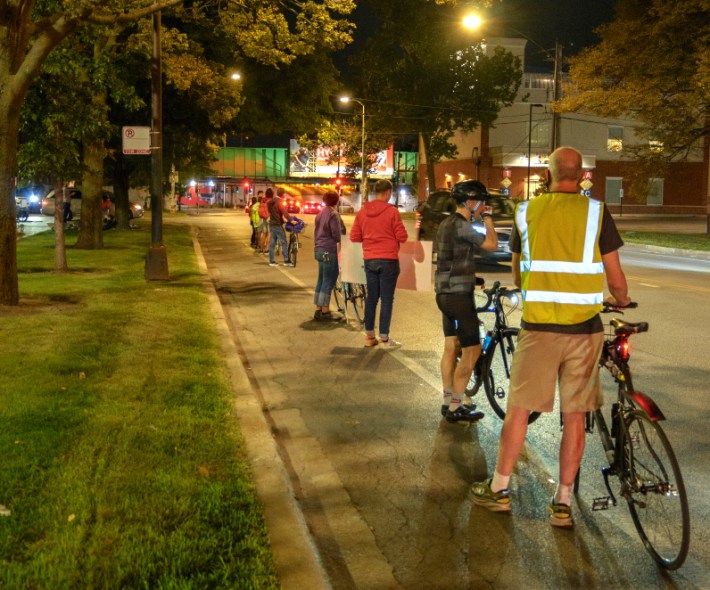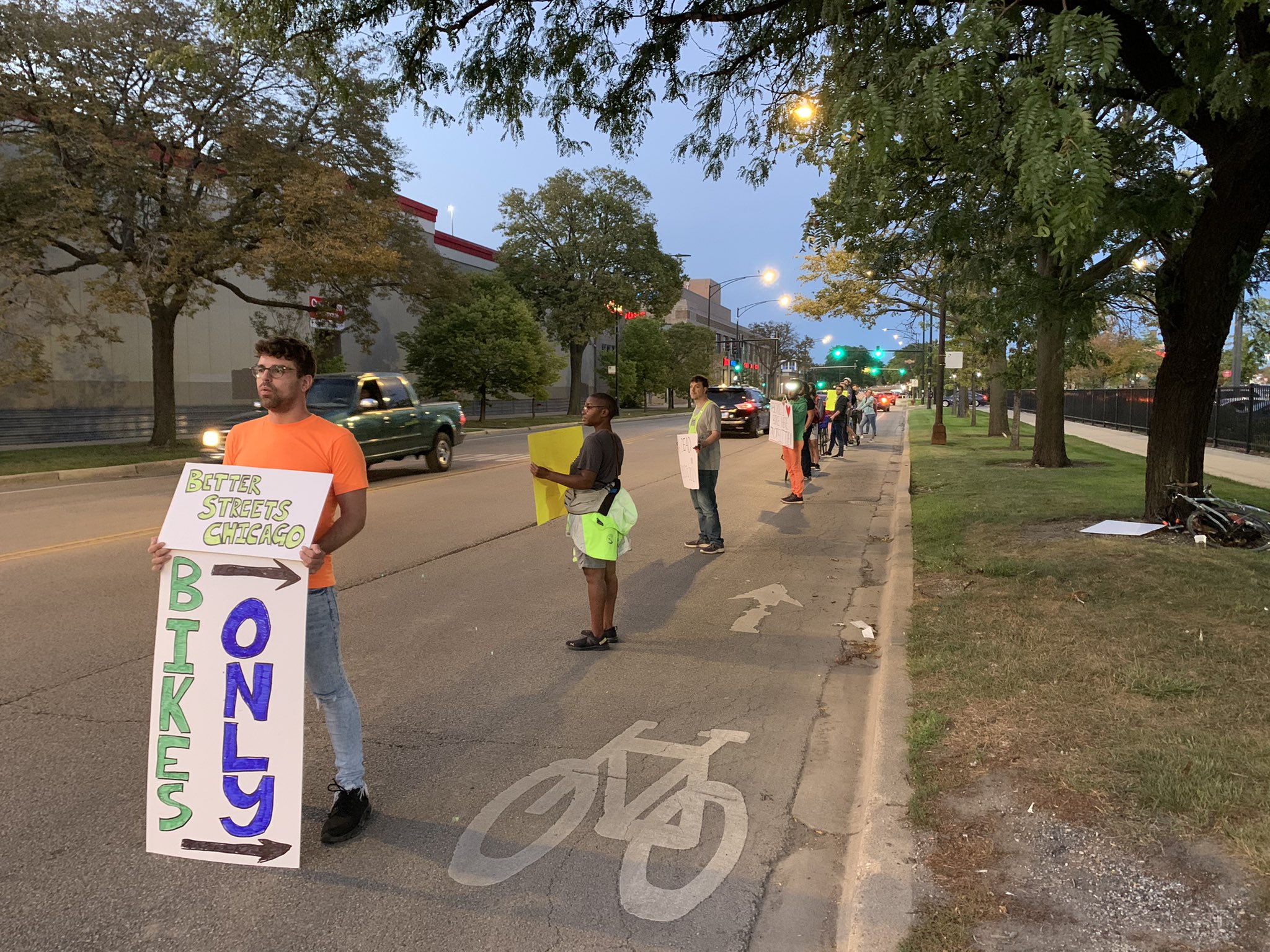I started out the summer with visions of organizing a few people-protected bike lane protests to bring together scores of cyclists to demand safe bike infrastructure. In actuality, I struggled with feelings of burnout which prevented me from taking action during the warmest months.
I consider myself very much an ideas person. I’m slowly getting better at taking action on my ideas and making them a tangible reality. One of the energizing visions I had when I cofounded Better Streets Chicago was a people-protected bike lane protest. Cyclists put their lives on the line every day just by getting from point A to point B in a city I feel hasn’t prioritized their safety. There are added layers of vulnerability when you literally put your life on the painted line to demand more of your elected officials.
Fellow cofounder Kyle Lucas and I were spurred to action after our own recent experiences with drivers intentionally weaponizing their cars against us. I also felt called to protest after my interview with crash survivor Nahiomy Alvarez about the death of her friend Sophie Elizabeth Allen, who was killed by a hit-and-run driver in mid-August, shortly after she beat cancer and got engaged.
Better Streets Chicago tweeted out a poll asking where folks would want to see us hold a protest. The intersection of Logan Boulevard and Western Avenue in Logan Square got the most votes. In 2008, a driver struck and killed videographer Tyler Fabeck, 22, on his bike there, and in May of this year a motorist fatally struck “School of Rock” drummer Kevin Clark, 32, while he was cycling through the intersection. This month the Chicago Department of Transportation finally announced that protected bike lanes are planned for Logan Boulevard near the intersection, but it shouldn't have taken the deaths of two young people to make that happen.
When I arrived at the location a little west Logan/Western last Thursday about 15 minutes before our start time, I was unsure how many people would be joining us. I spotted Kyle and we were joined by Streetsblog contributor Michael Podgers a few minutes later. We introduced ourselves to a few folks who had heard about the protest on Twitter. I grabbed a few protest signs I had brought with me and wasted little time holding one up. My sign read, “Protected bike lanes save lives.” Kyle’s sign read, “Stop Killing Us.” Michael stood at the entrance to a segment of the existing non-protected bike lane with a sign that read, “Bikes Only” and an arrow pointing to the bike lane. I could see the people passing by in cars reading our signs.

Over time more people rolled in to lengthen our line. In total we had about twenty people join our protest. Considering that Better Streets announced the protest on short notice and mainly promoted it online, it was a pretty good turnout for our first demonstration. Drivers expressed support by honking their horns. One woman stopped to take our photo. She shared that her son had been hit by a driver and that she fully supported our efforts.
Honks of support are one thing, but it remains to be seen if the same support will be there when it comes time to convert more car parking lanes, i.e. free or low-cost storage of private property on the public way, to create protected bike lanes. However, the stretch where we protested has no on-street parking to contend with, which means there's no excuse for not having a physical barrier like a curb to protect people in the bike lane.
Again, it's frustrating that it took two tragic deaths to get protected bike lanes on Logan Boulevard. It’s even more frustrating that the planned upgrades are not all that substantive. The flexible plastic posts that will be used to delineate the cycling space will likely be run over within a month. CDOT says the barriers could later be upgraded to concrete, but that remains to be seen.
Even as we were protesting last Thursday, a few drivers came scarily close to us. Sadly, many of the protesters have experienced their own close calls with drivers. It is that lived experience that motivated us to demand more from the Chicago and Illinois transportation departments. Paint and plastic posts are not true protection, nor will they motivate a critical mass of Chicagoans to ditch their car for a bike. We need a citywide network of barrier-protected bike lanes and we needed it years ago.





